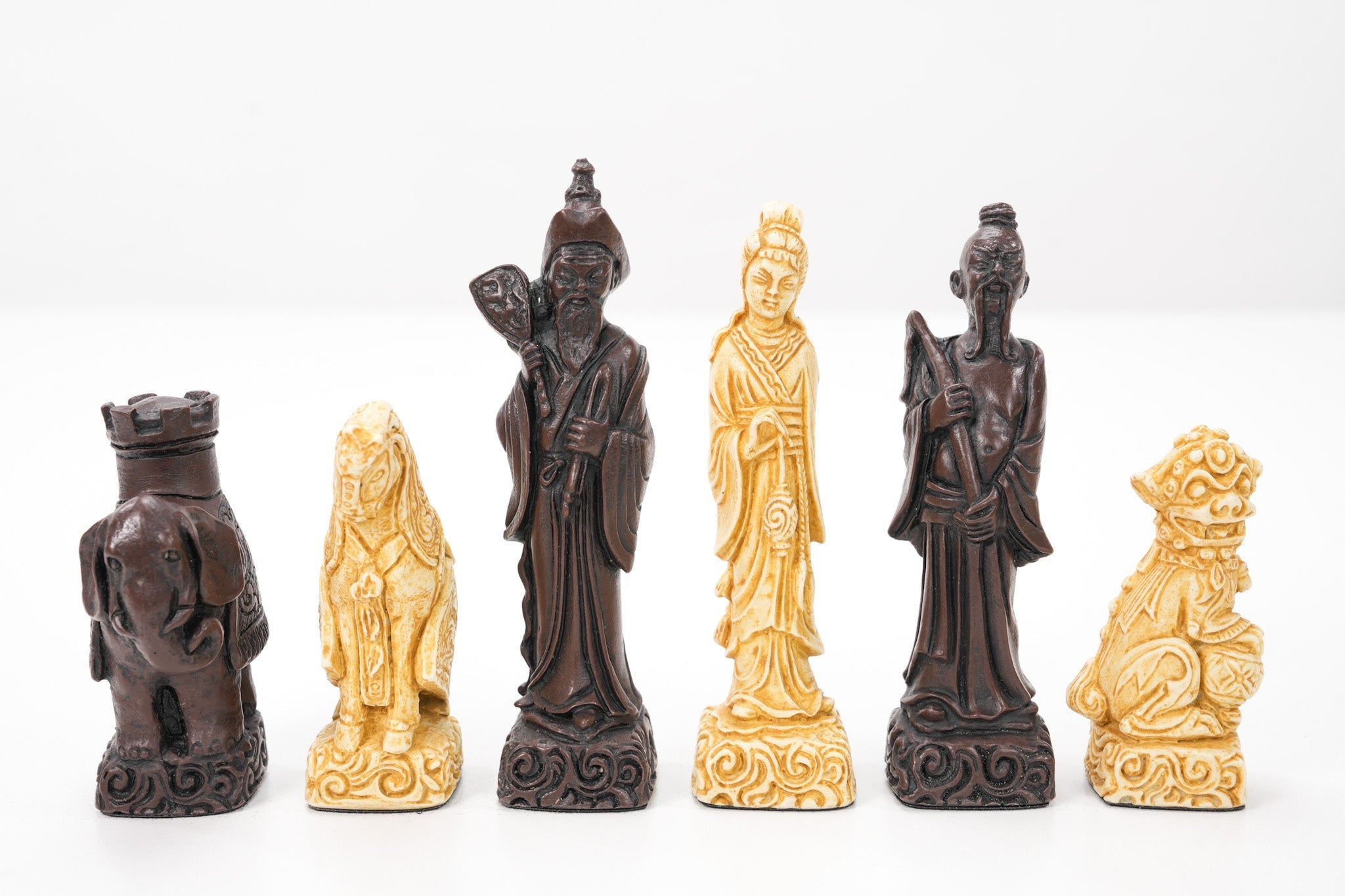
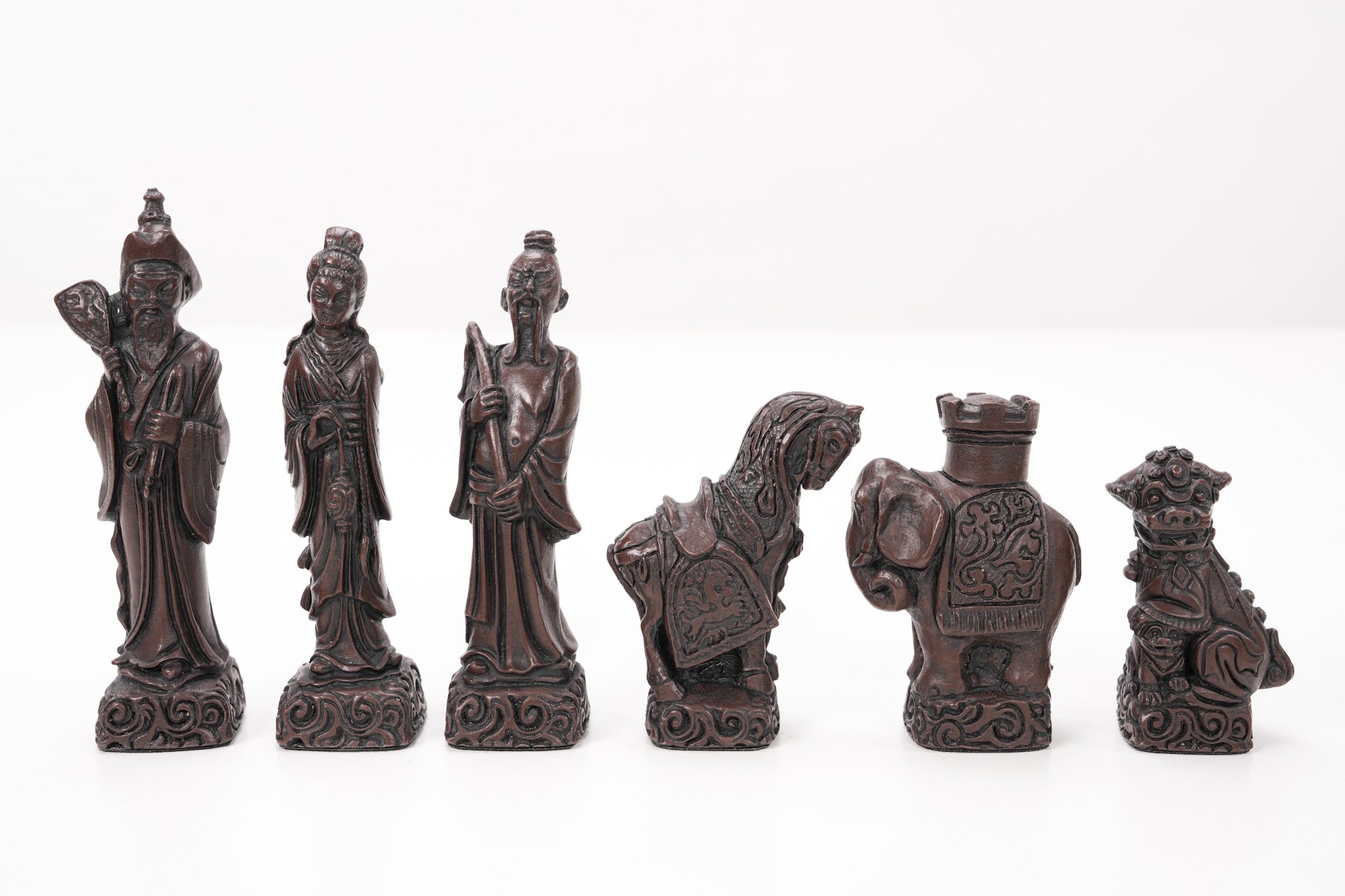
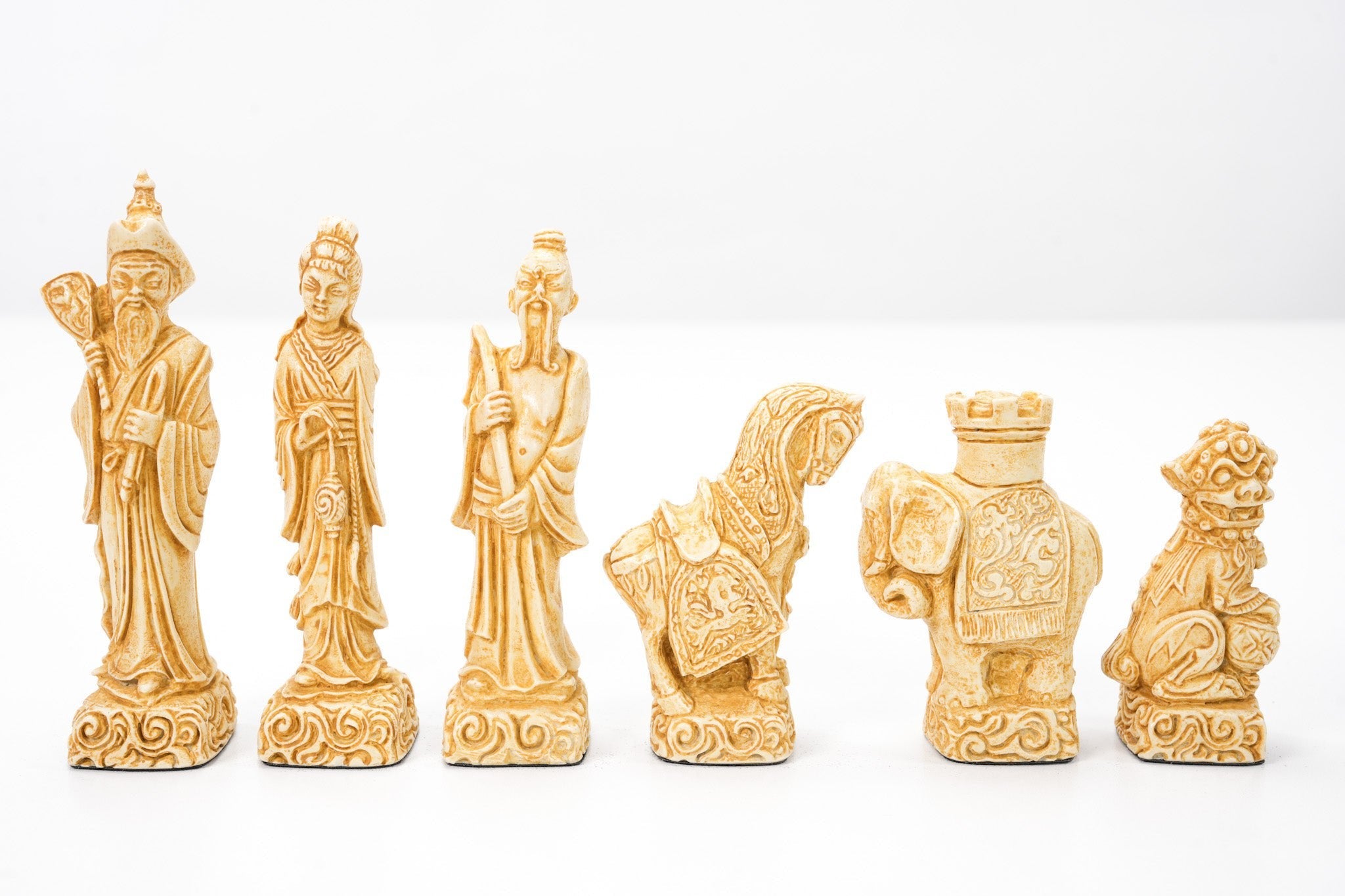
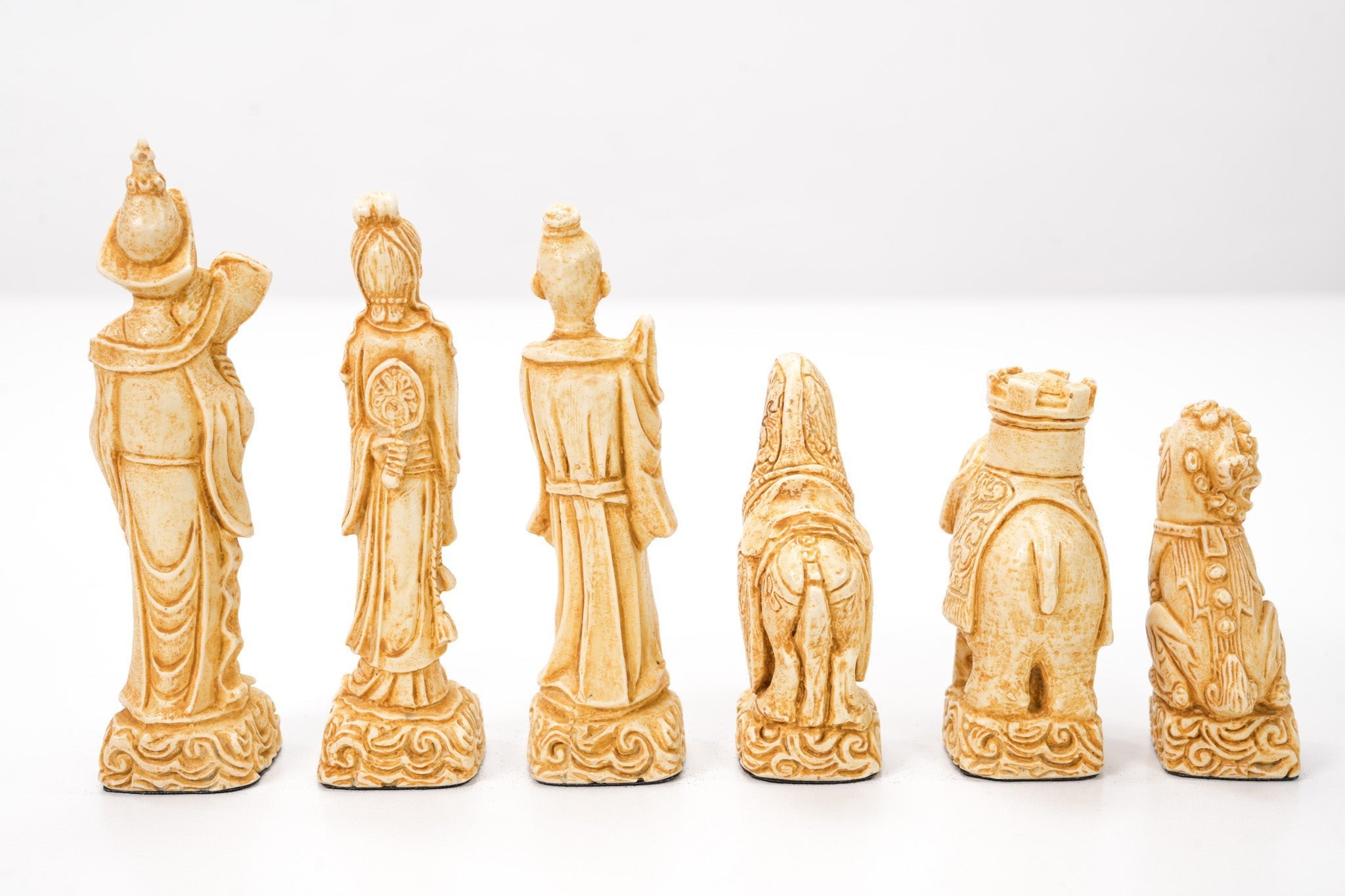
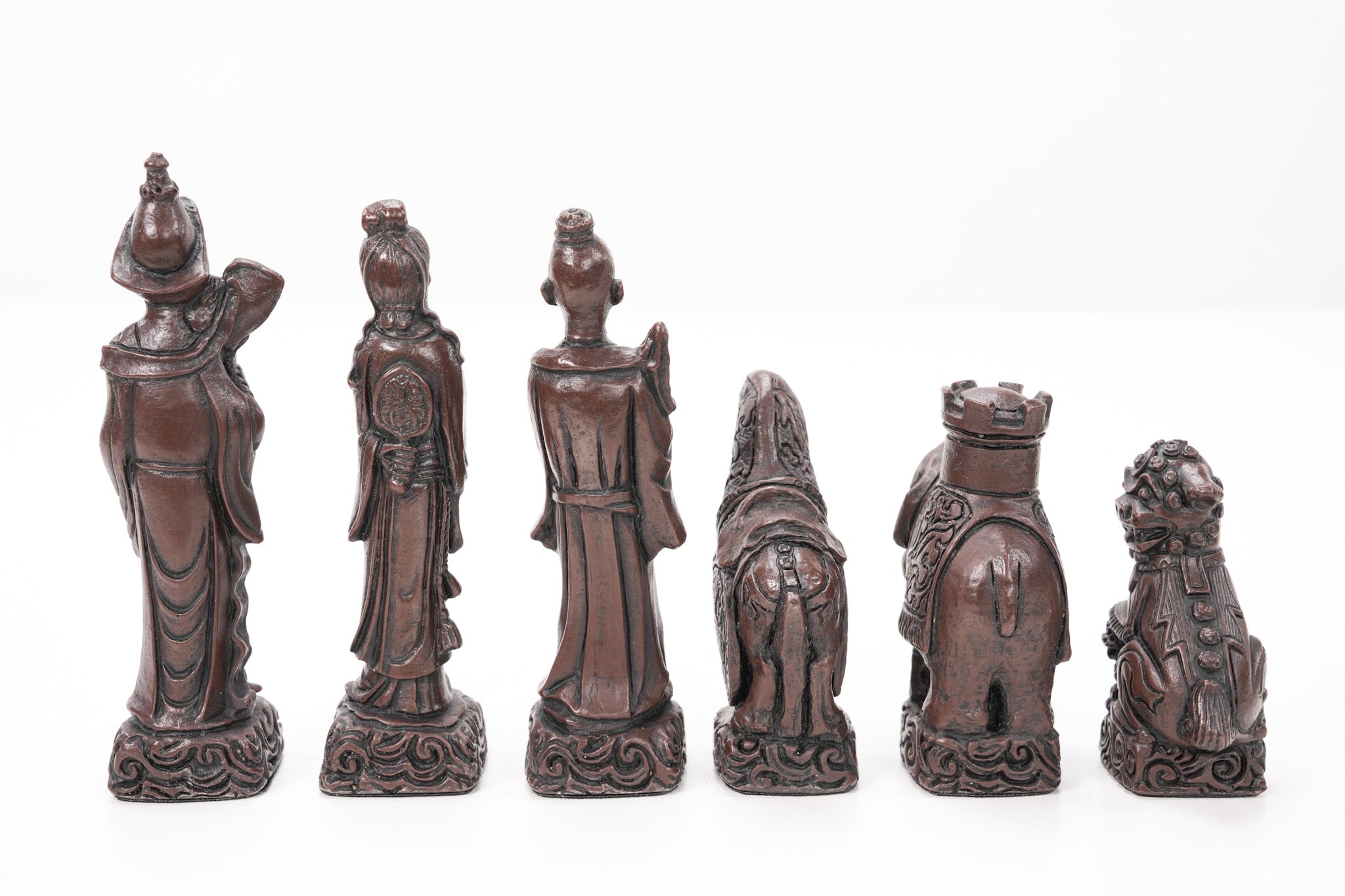
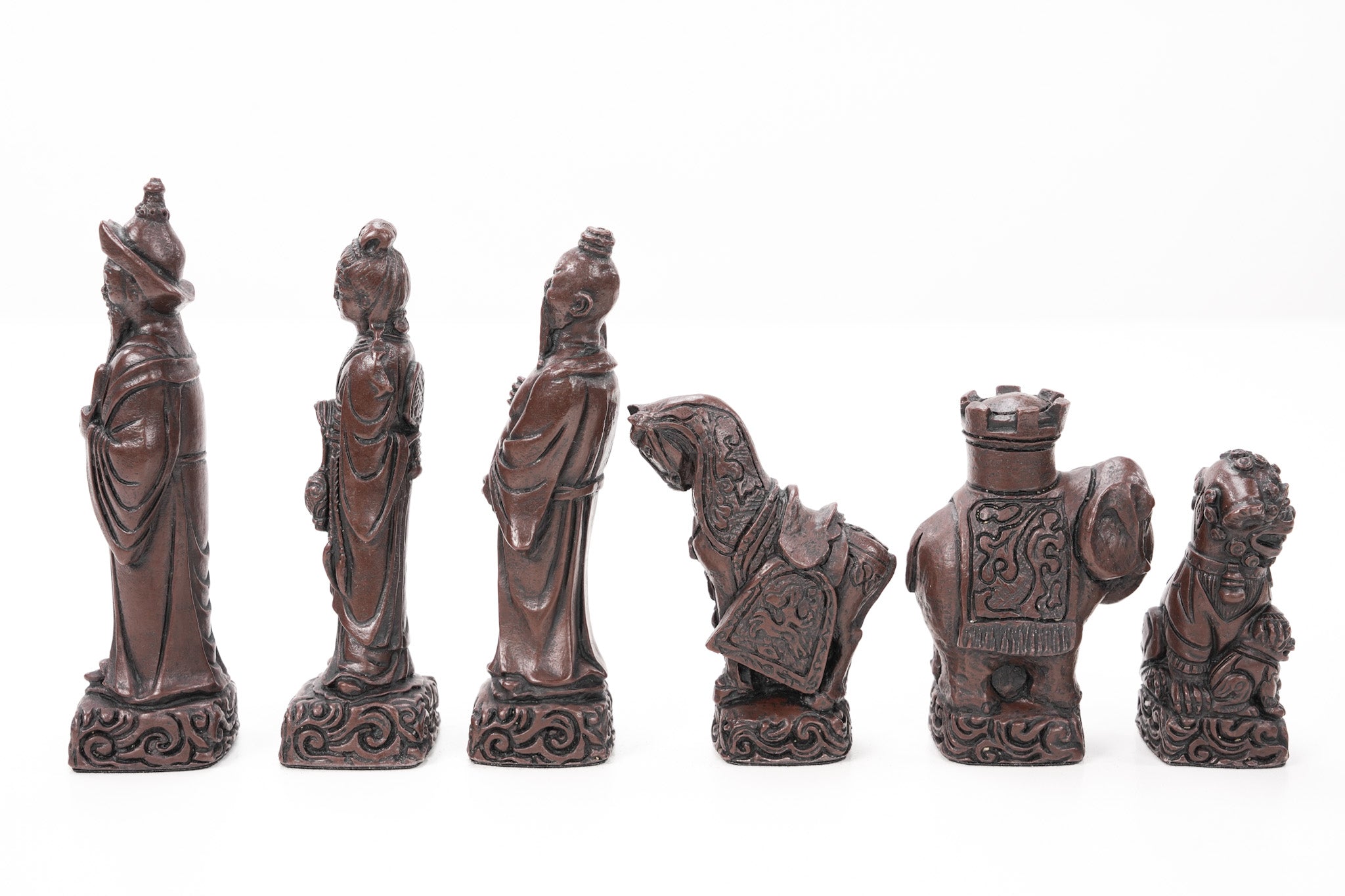
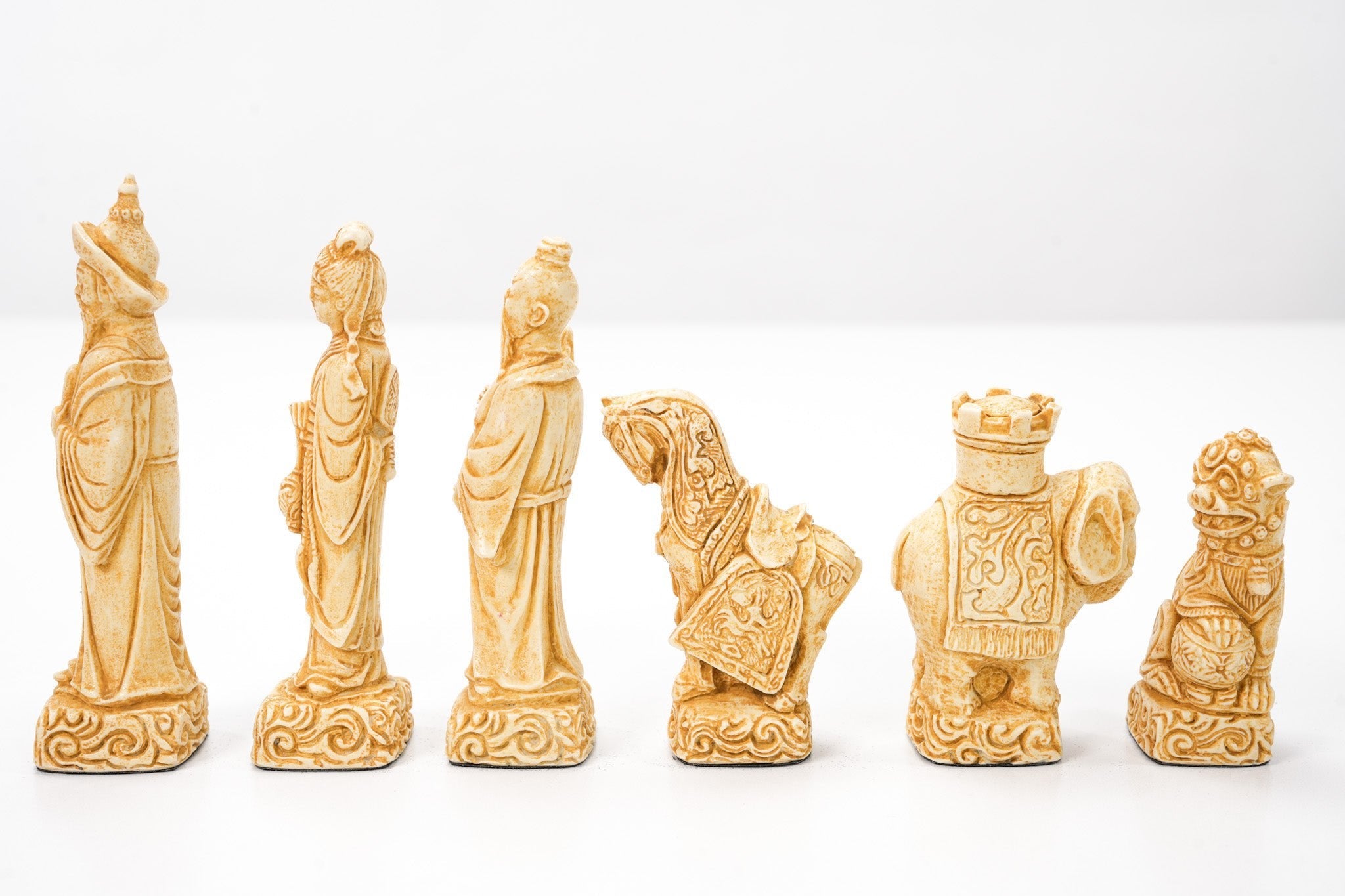
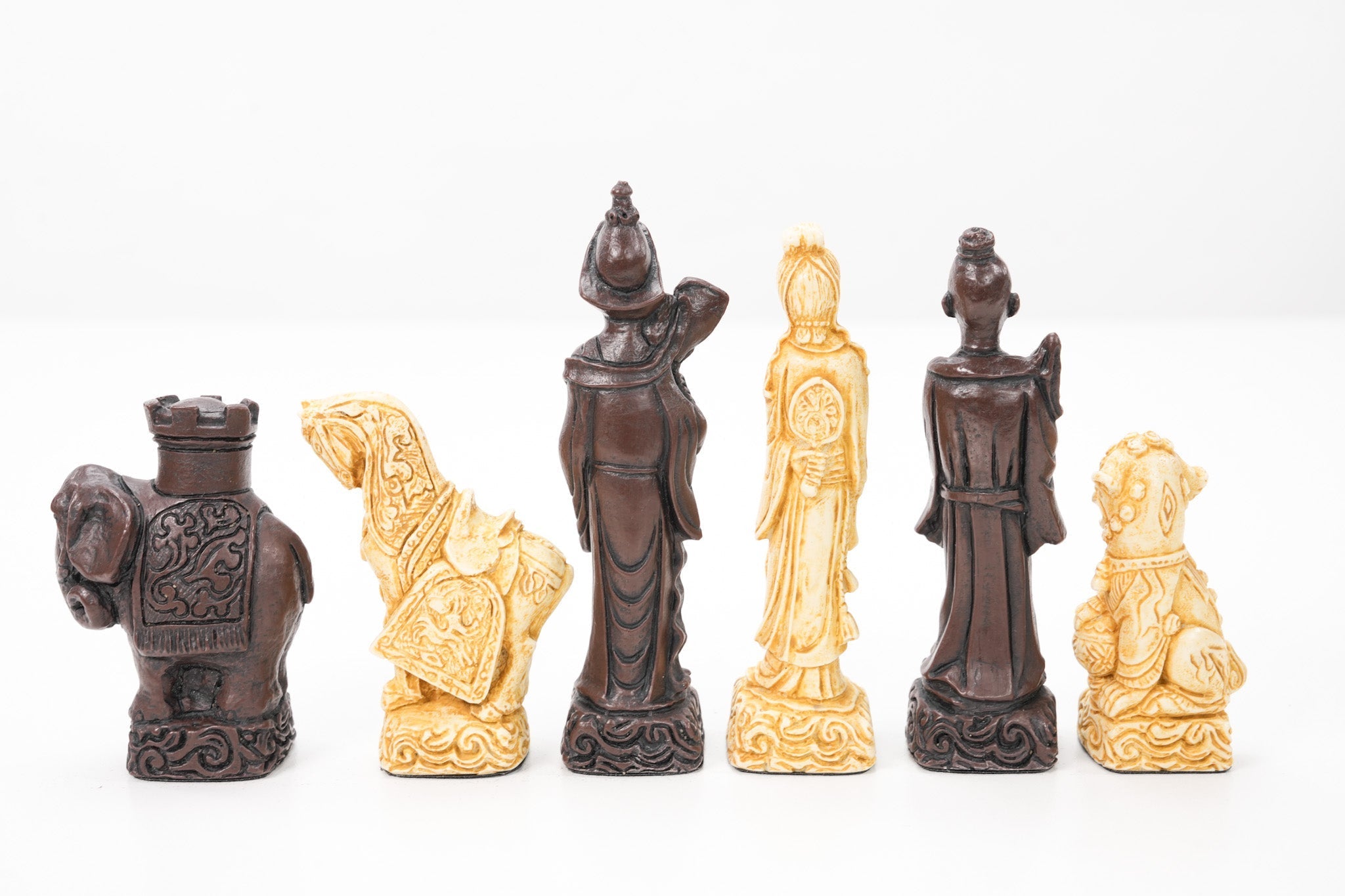
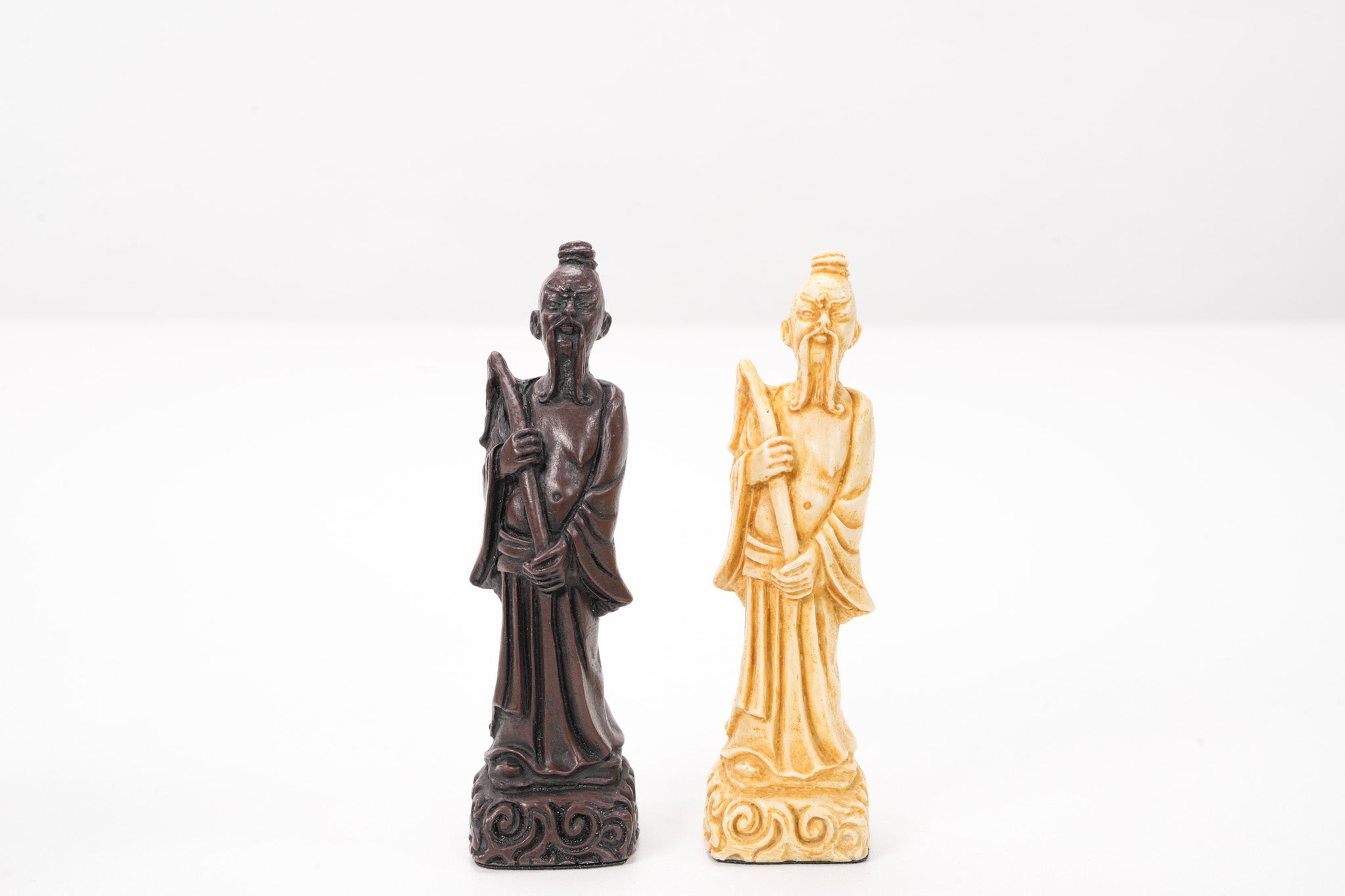
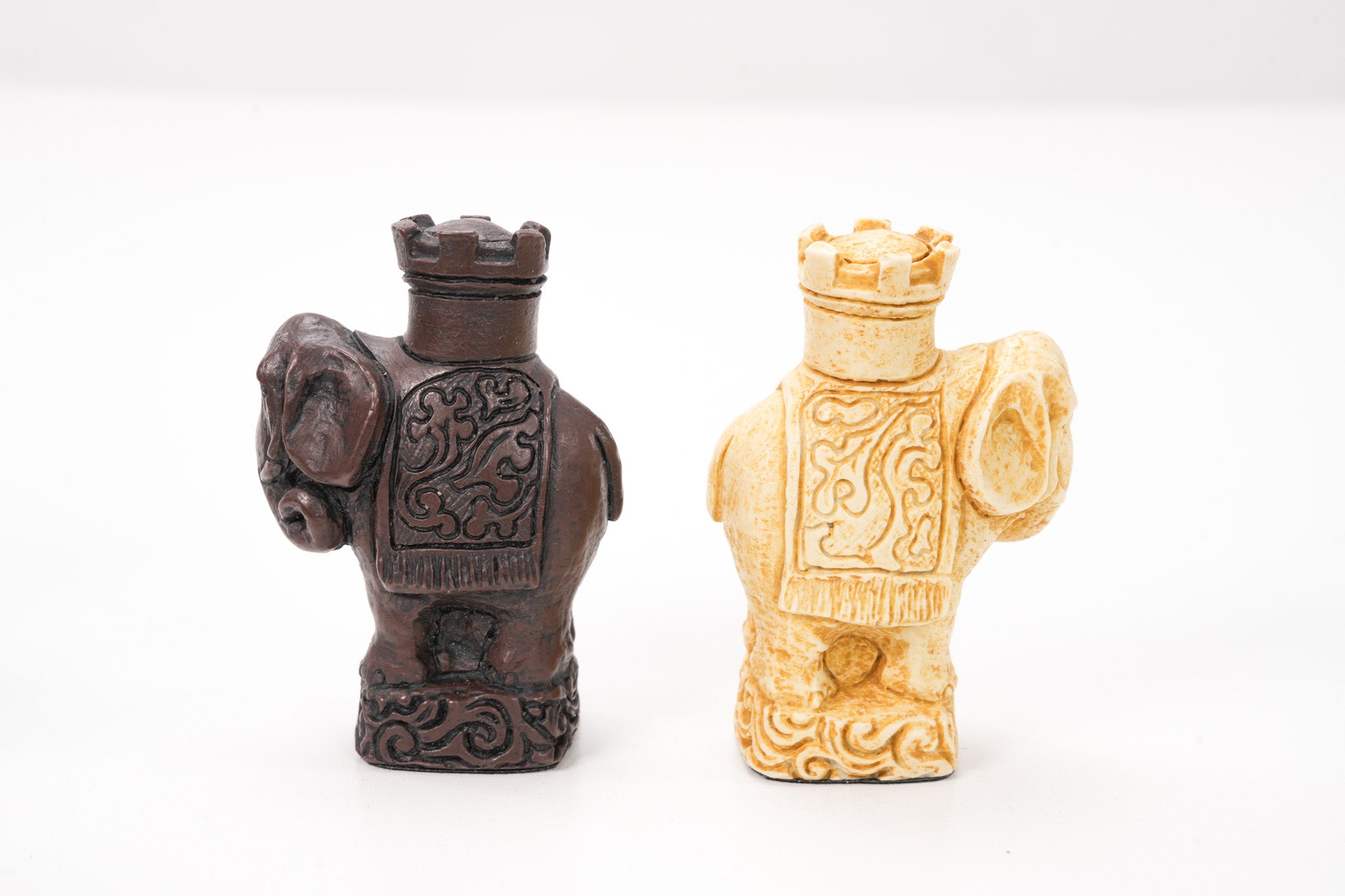
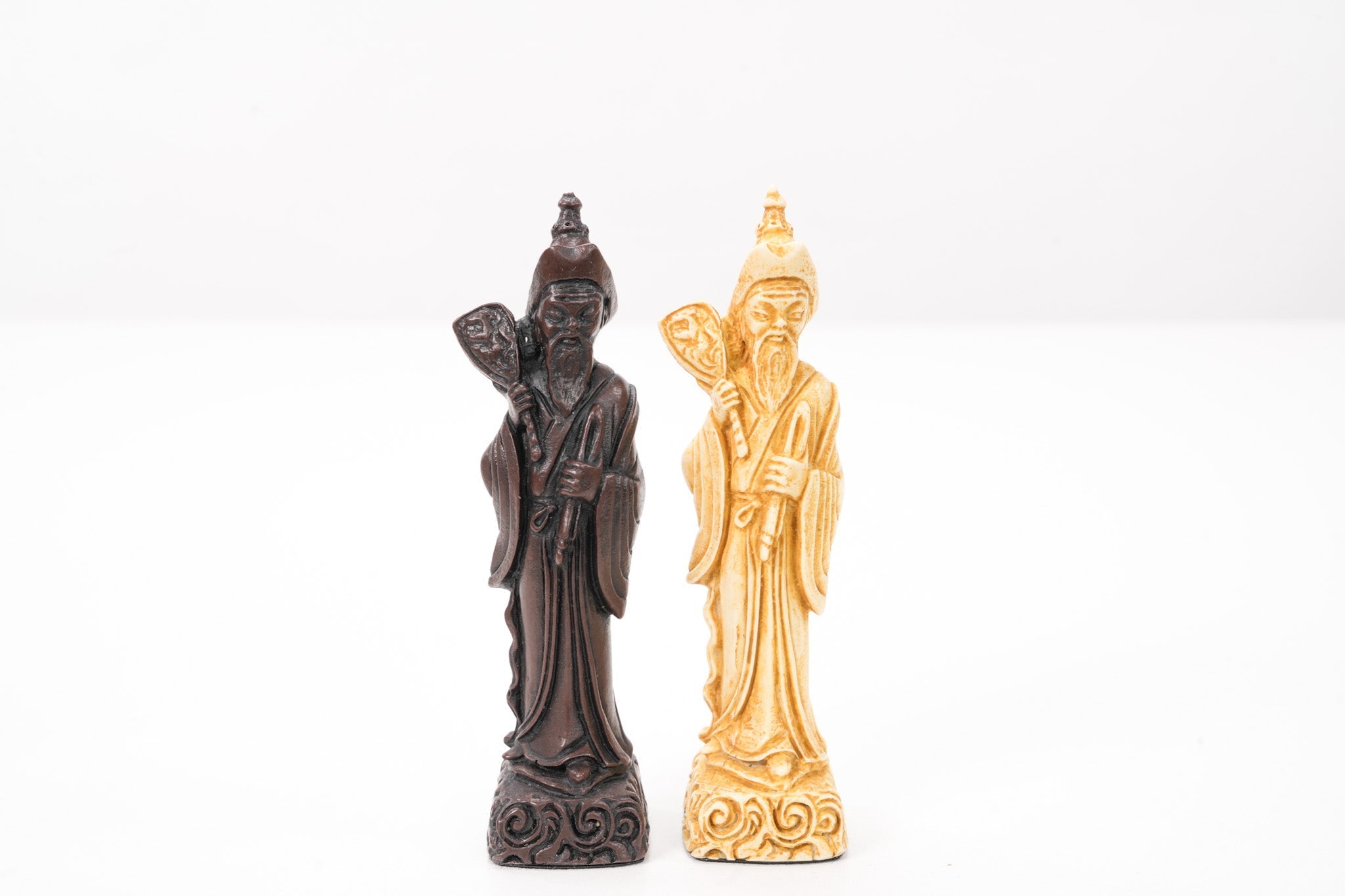
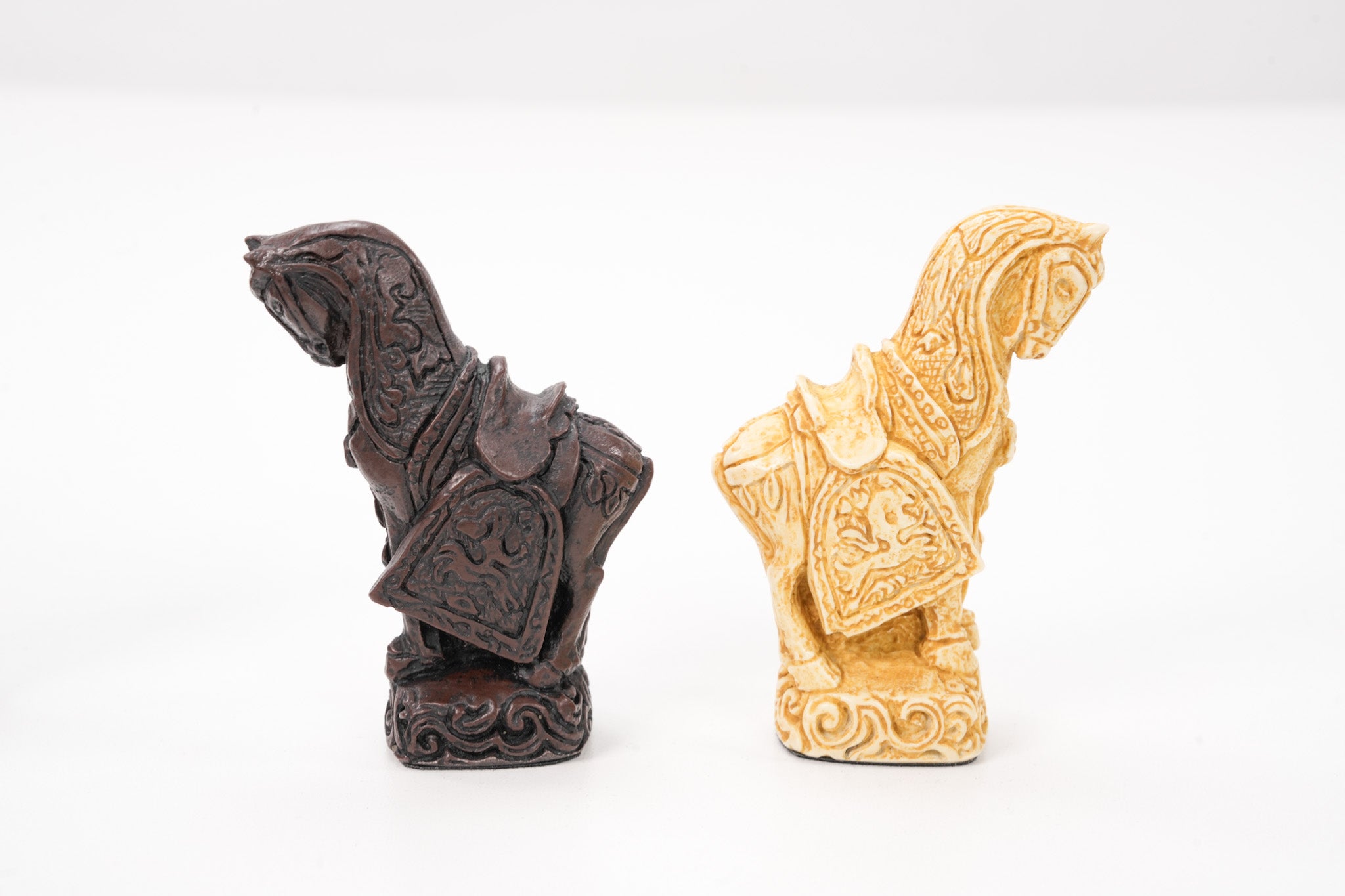
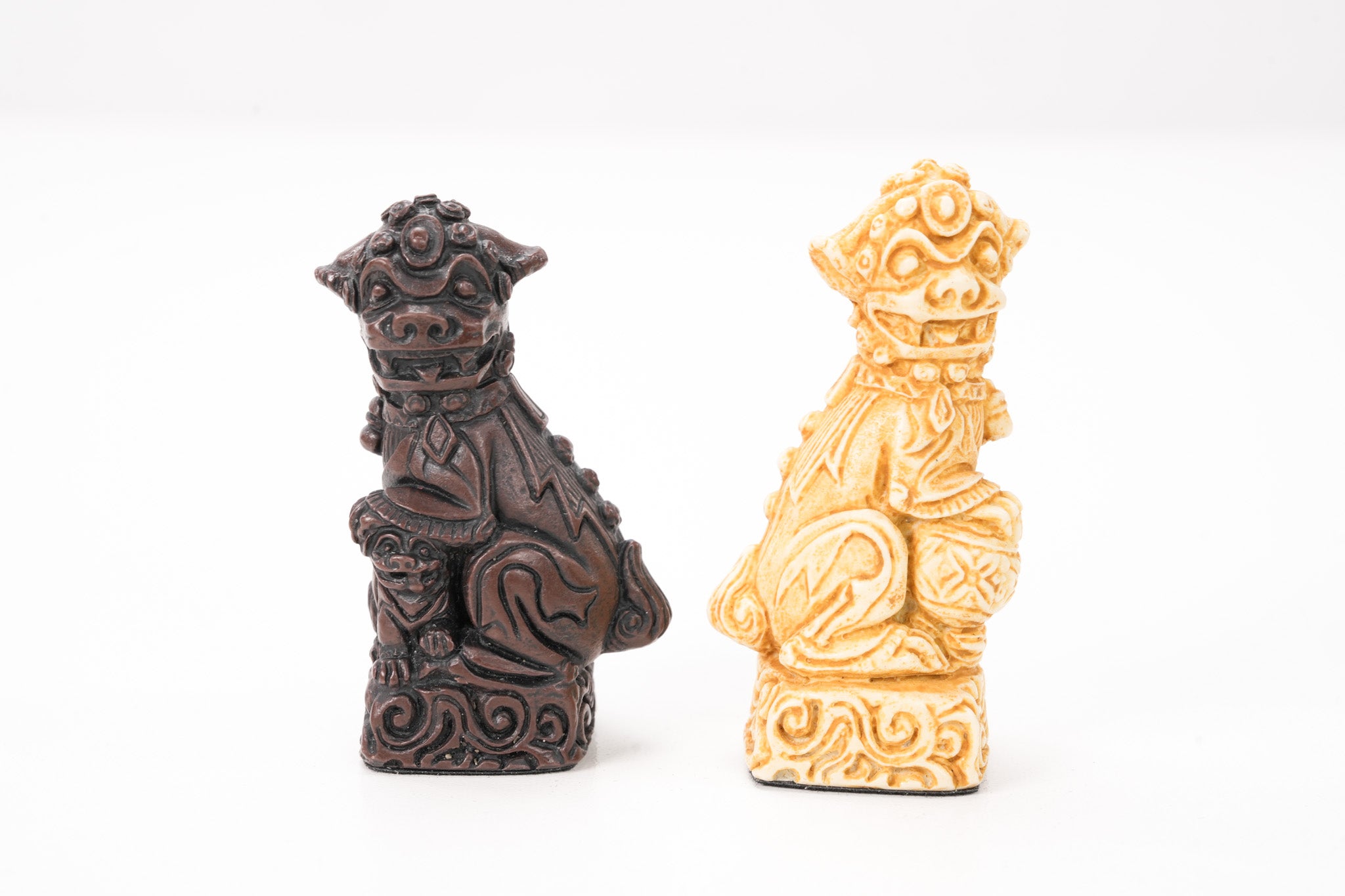
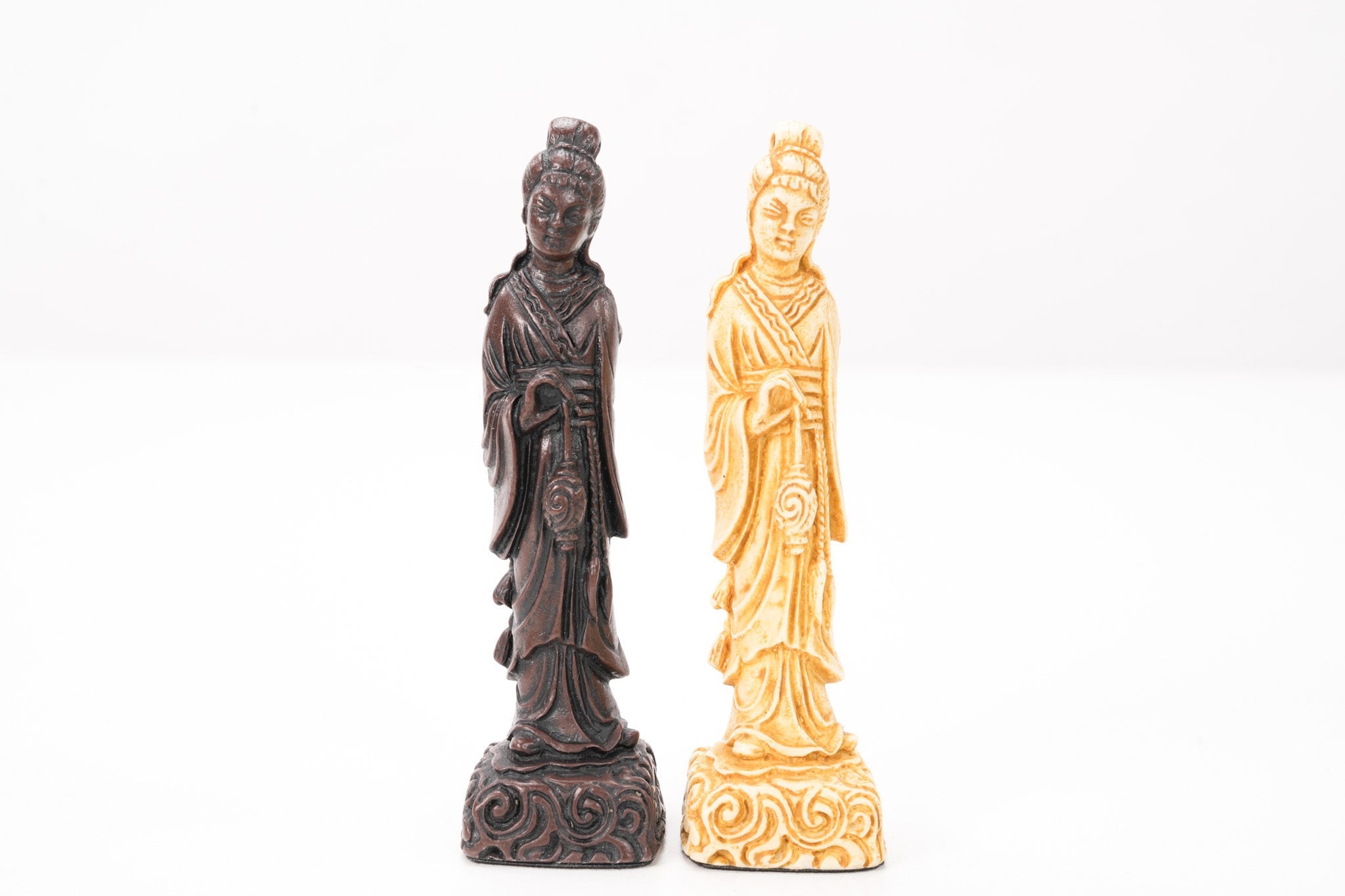
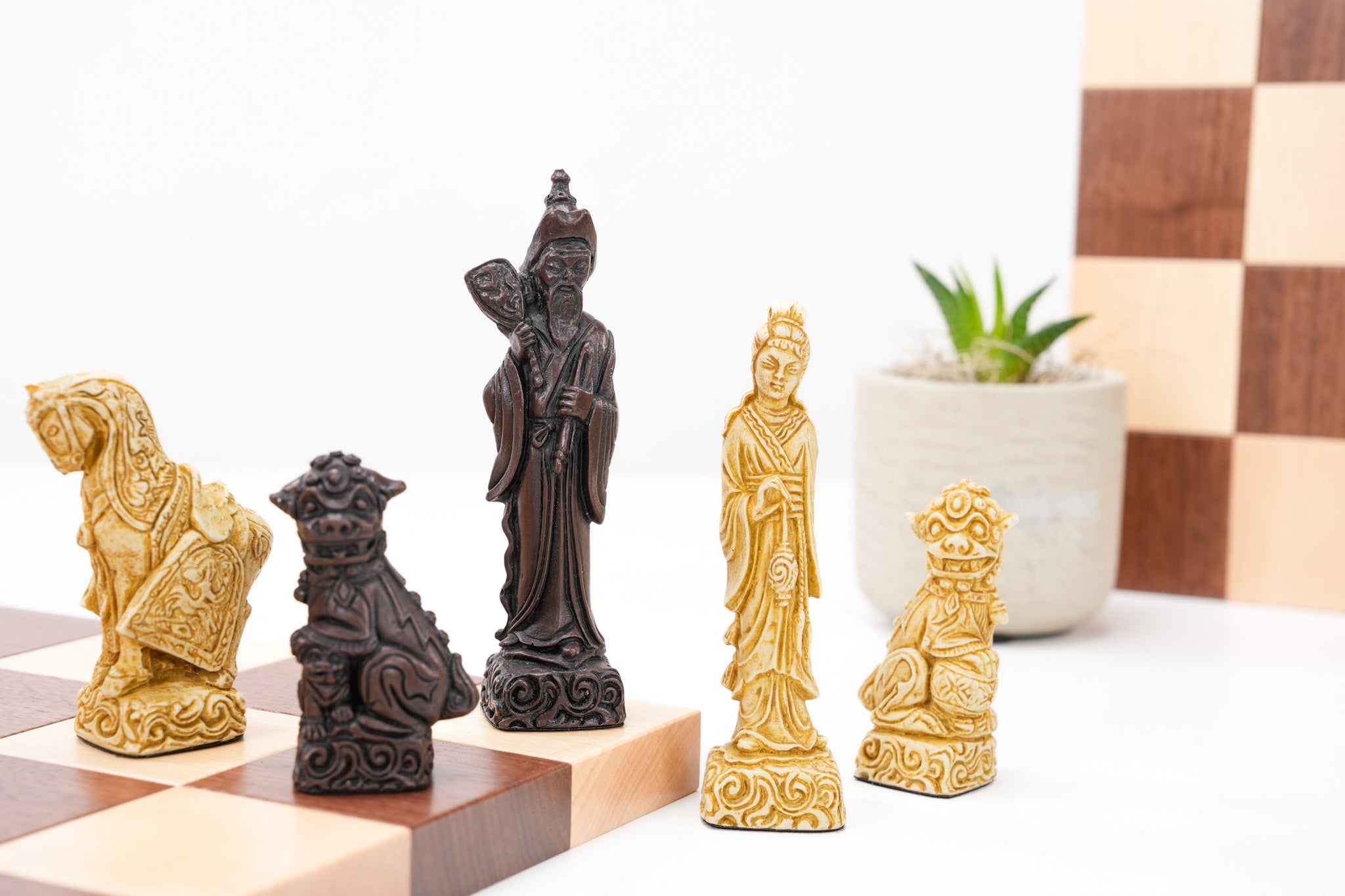
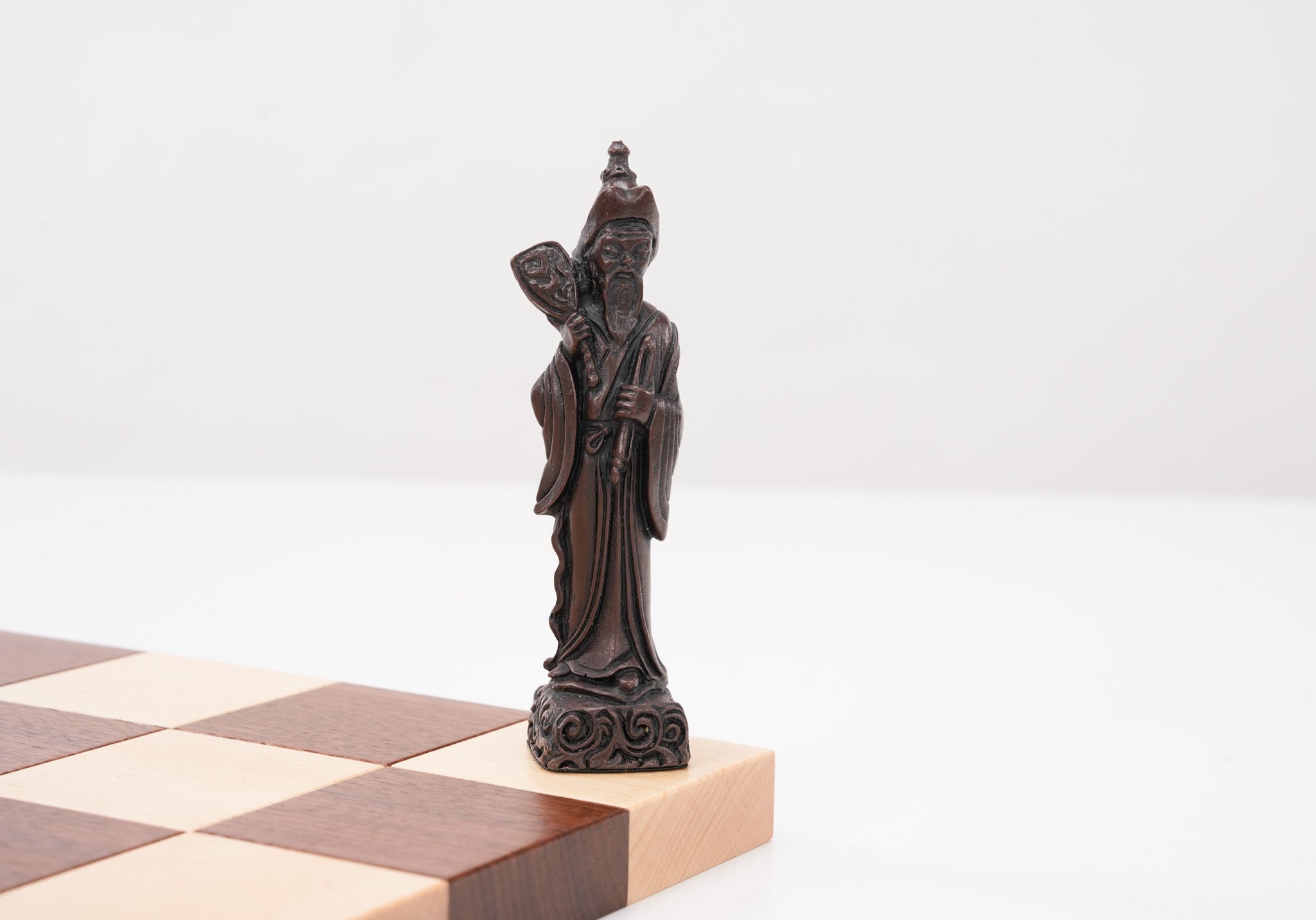
Mandarin Chess Pieces by Berkeley - Russet Brown
- Get a FREE Gift with Purchase

Chess House Guarantee
- Easy parts.When buying a chess set online, we've got you covered. With us, you have easy access to parts for years so your set is always playable.
- Safe, timely arrival.Every order is thoughtfully packed. Plus, delivery time is clear from checkout until it reaches your door.
- Peace of mind.Easy access to our friendly experts and 90 day, no-hassle returns.
That's why 20,965 people rate Chess House 4.8 out of 5 stars.
Mark (Verified Buyer) Today
Always fast, efficient, packed well, and good updates and communication on order even if just email.
About The Mandarin Chess Pieces by Berkeley - Russet Brown
Board Not Included
Few cultures rival the Chinese in terms of length and historical significance. One of the earliest recorded civilizations in the world, Chinese history dates back thousands and thousands of years. From feudalism to the rise of communism the history of China has long been one of the most colorful and evolving cultures to write itself into the annals of time.
Along the lush banks of the Yangtze River, Ancient Chinese History began to take shape—cultivating rice and millet allowed these early ancestors to flourish. But ancient Chinese History really begins with the Shang dynasty, where fact and legend begin to separate themselves—many of the most precious treasures of Chinese culture date back to this time. From this time on, numerous warriors dynasties fought for control of the regions that would soon make up the Chinese empire—from the early capital of Xi’an (now home to the country’s famous Terra Cotta Warriors) to the valleys surround the Yangtze, ancient Chinese culture was marred by violence and a high turnover rate of leaders.
The introduction of imperial China finally came underneath the rule of the Qin dynasty, whose king was able to unify a number of the warring powers that spread themselves across the mountains and rivers of China. The Qin dynasty took many measures that led to the progress of the Chinese people to the forefront of culture. This dynasty’s major contributions included the introduction of a written language, a regulated form of currency, and a legalist government that was able to successfully keep the tenuous peace between formerly competing city-states. It was under the Qin dynasty that construction on the Great Wall of China began, just one of the great legacies of Imperial China, the likes of which would last until the successful Communist revolution in 1919.
ut the Qin dynasty would not last long, quickly giving way to the Han dynasty, a family of rulers that would oversee one of the most prosperous times in ancient Chinese history. The ground rules that the Qin dynasty put in place were modified to fully embrace the philosophy of Confucianism. During this period, the arts and sciences flourished, as did international trade. The Silk Road was founded during the reign of the Han dynasty.
In the early 600s the history of China took another important turn as the empire (both the royalty and the commoner) slowly but surely turned to Buddhism to run the country. Trade routes continued to ascend in importance, and the city of Xi’an was debatably the largest city in the world during parts of the Han dynasty.
But the Han dynasty was overthrown by a long series of revolutions, eventually ending in the hands of the Mongols, who moved the capital city to Beijing before being unseated by the Ming dynasty. The new rulers lasted almost 300 years, transforming China from a major player in international trade into a more insular empire, more focused on the agricultural facets of China. Among other things, the repair and extension of the Great Wall of China took place during this dynasty, which ended with the invasion of the Manchus, who quickly instated the Qing dynasty. Despite their Mongolian heritage, the Qing dynasty immediately adopted the long-held Confucian ways of government.
This was the most stable and longest lasting of all dynasties throughout the history of China. One of its main downfalls was the costly Opium Wars, the first of which ended with the signing over of Hong Kong to British forces. The Qing dynasty remained unable to adapt to the approaches of the outside world—the influences of the British, French, Japanese and other capitalist forces helped lead to the end of the celebrated dynasty, and China fell into discontent at becoming a semi-colonial outpost for invaders. The people blamed the Manchus that remained in the Qing dynasty, leading to the famed Boxer rebellion.
Before long, the Qing dynasty was a thing of the past, something relegated to Chinese history books by the Communist revolution. Led by Sun Yat-Sen, and Chaing Kai-shek, they in turn were defeated (or exiled to Taiwan in the case of Kai-Shek) by the current configuration of the Communist party, led for over 25 years by Mao Zedong. To this day, the Communist party governs, though more and more concessions are being made to incorporate capitalist ideas every year.
This beautifully detailed chess set reflects the ancient spirit of Chinese history depicting traditional figures and symbols.
- King Height 5″ (12.7cm)
- King Base 1 5/16″ (3.3cm)
- King Weight 2.6oz (74g)
- Set weight 4lb 7oz
- Made of a ratio of crushed marble and resin, and then finished with a felt underlay
- Boxed weight 5lbs 10oz
- 32 Chessmen
- Price includes set of pieces (boards available separately)
- Price includes set of pieces (boards available separately)





